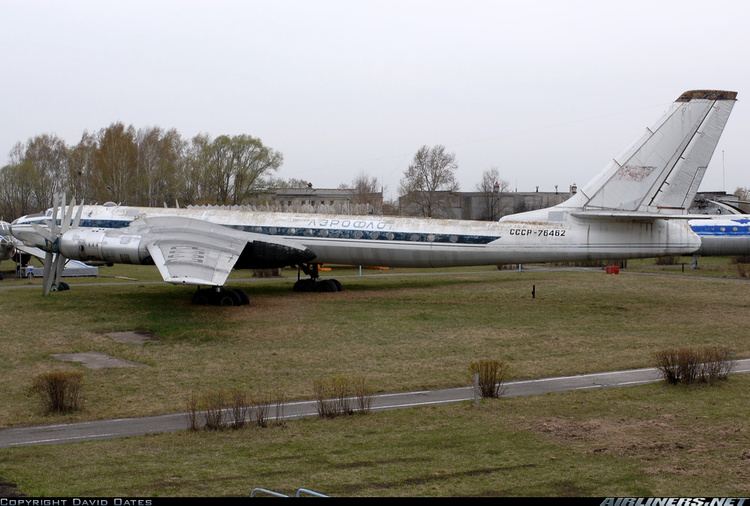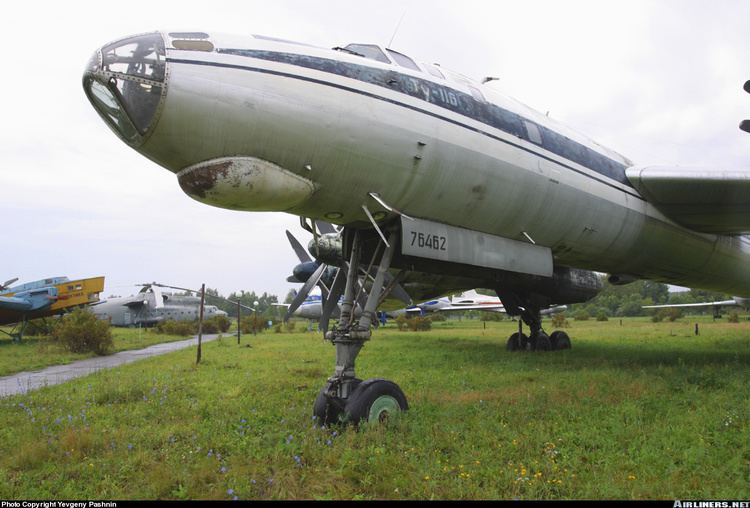Top speed 900 km/h Length 46 m | Wingspan 54 m First flight 1957 | |
 | ||
Aeroflot tupolev tu 116 newsreel 1963
The Tupolev Tu-116 (Russian: Tyполев Тy-116) is a turboprop-powered long-range airliner designed by the Tupolev design bureau and built in the USSR.
Contents
- Aeroflot tupolev tu 116 newsreel 1963
- Development
- Design
- Operational history
- Specifications Tu 116
- References

Development

The Tu-116, like the Tu-114, was based on the Tu-95 strategic bomber. Both airliners were developed in parallel with the Tu-116 taking priority due to the numerous visits of General Secretary Nikita Khrushchev to both Western and Eastern countries during the so-called Khrushchev Thaw. The aircraft's mission was to transport the head of state together with his security detail and entourage. Concurrent development of the Tu-114 and Tu-116 was justified by Khrushchev's coming visit to the United States at which time the Tu-114 might not have been ready.

Initially the airliner was to be developed very quickly, a little over a year, due to relative simplicity of modifications. However, the initial introduction date was moved from September 1956 to 1957 because the Tupolev Design Bureau was overloaded with military orders.

The airliner received the internal code Tu-114D ("Diplomatic"), which later created some confusion – the Tu-114D was also the official designation of the long-range variant for trans-atlantic flights, the letter D standing for "dalniy" (Russian for "long-range"), which also had 64 total passenger seats.
Design

The airliner was to transport 24 passengers including a cook, a flight attendant, a navigator-announcer to inform the passengers about the flight, and, when necessary, 10–12 armed guards.

Technically, the airliner wasn't much different from the original Tu-95. All protective and bombing equipment was removed, and the space behind the wings was given to two passenger cabins, a lavatory, a wardrobe, and a service room with a total area of 70 square meters, with windows cut into the fuselage. The first passenger cabin held 6–8 passengers and the second one was designed for three VIP passengers, equipped with beds and couches.
The pressurized cabin led to a short hallway with a staircase which was lowered to allow access from the ground. It also served as an emergency exit.
The flight crew consisted of two pilots, navigator, flight engineer, flight mechanic and radio operator.
Operational history
The two Tu-116 were modified from two regular Tu-95 MSN 402 and 409. Neither was ever used to transport the head of state.
After flight testing, both airliners were transferred to the Soviet Air Force and served for various purposes until the early 1990s.
Specifications (Tu-116)
General characteristics
Performance
